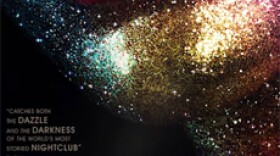It might have been a combination of the inspiring political activism around the recent election and the daily assaults on the environment by the Trump administration.
But it got me wondering what I’ve done for the world lately. I’m of the apparently not universally shared opinion that no issue is more important than addressing climate change. And even if health care or the economy is at the top of your list I think I can speak for most listeners of this fine radio station in my belief that we’re capable of walking and chewing gum at the same time.
In any case, I failed to come up with anything concrete besides recycling my soda bottles and cleaning the trash off the side of my road.
But then I realized I’ve accomplished this: I’ve helped raise an environmentalist.
I’m not suggesting that my daughter Lucy is the next Rachel Carson. The author of “Silent Spring,” the book that inspired the environmental movement back in the Sixties.
But that’s not the point. Hope may well rest in raising millions, even billions of people like Lucy. The kind of activist who thinks truth is important enough to a functioning democracy that she ran four phone banks for Antonio Delgado and still found time this fall to gather mushrooms in our woods.
Which got me to thinking. How does one raise a forager or a birder?
How much credit can his or her parents take, if any? Does it help if you’re exposed to nature on a regular basis growing up? Do some of us feel a greater affinity for the natural world than others? Is there something in particular individuals’ DNA or brain structure that’s always hunting for the world in a grain of sand, “And a heaven in a Wild Flower.” That’s the second line of that William Blake poem. I just looked it up.
I started examining Lucy’s life to see whether there was a line that led from her first visit to the Hudson Valley when she was eight days old – I can still feel her heart beating against mine in her snuggly as we walked out to our pond – to her current job with the Prospect Park Alliance, the non-profit that runs Prospect Park in Brooklyn.
She was never squeamish. At three she was catching frogs and naming them all Jenny for reasons that remain obscure.
And at thirty she’s somewhat maniacal about foraging for ramps and mushrooms, as I mentioned. She’s getting married in June and her wedding registry includes a warbler identification workshop.
Our younger daughter Gracie came to her appreciation for nature a little later in life. Her explanation is that she didn’t have time in high school because most of her energy was spent dating. That sounds reasonable enough.
But these days she’s a chef at Blue Hill at Stone Barns, the farm to table restaurant and sustainable agriculture center in Westchester. So her connection to food, and the soil and weather that create it, is a daily occurrence.
I like to think my wife and I deserve some credit. Not to mention the Hudson Valley where we fled religiously on weekends, our children occasionally kicking and screaming.
Debbie grew up in one of those idyllic “Leave It To Beaver” suburbs where she was let out in the morning and often returned home only for meals. She certainly knew her birds far better than I did when we started coming upstate.
I was a city boy and had literally to be pried away from the TV and Saturday morning cartoons to play in Central Park.
But I can also point to moments that made me realize that mountains had as much going for them as the Manhattan skyline. And that woods and windswept beaches better suited themselves to writing lousy poetry at sixteen than the bedroom I shared with my younger brother on the Upper West Side.
I also took a 1969 “teen tour” across America with forty other adolescents on a Greyhound bus. While girls and what they thought about me was my primary concern what remains most vivid is the way the Grand Tetons rose out of the Jackson Hole valley, the shear face of El Capitan, Utah’s sandstone arches at sunset.
And then I attended college in Vermont where Art History 101, fresh air and falling leaves are inextricably mingled in my memory.
Those experiences persuaded me that as entertaining as people-watching in midtown can be it’s just a sideshow, a modest anthropomorphic manifestation of the natural world. Occasionally beautiful and even moving but not the mother lode.
For that you need to get out of the city and out of yourself. I’ve discovered that bird watching, stilling your senses until the forest starts to reveal itself, can be highly therapeutic.
I like to think my children picked up some of that -- a reverence for nature, the desire to seek the sacred in the everyday.
That’s what drove many of us to this special place. Passing it along may yet prove critical to the fate of our planet.
Ralph Gardner, Jr. is a journalist who divides his time between New York City and Columbia County. More of his work can be found at ralphgardner.com
The views expressed by commentators are solely those of the authors. They do not necessarily reflect the views of this station or its management.






